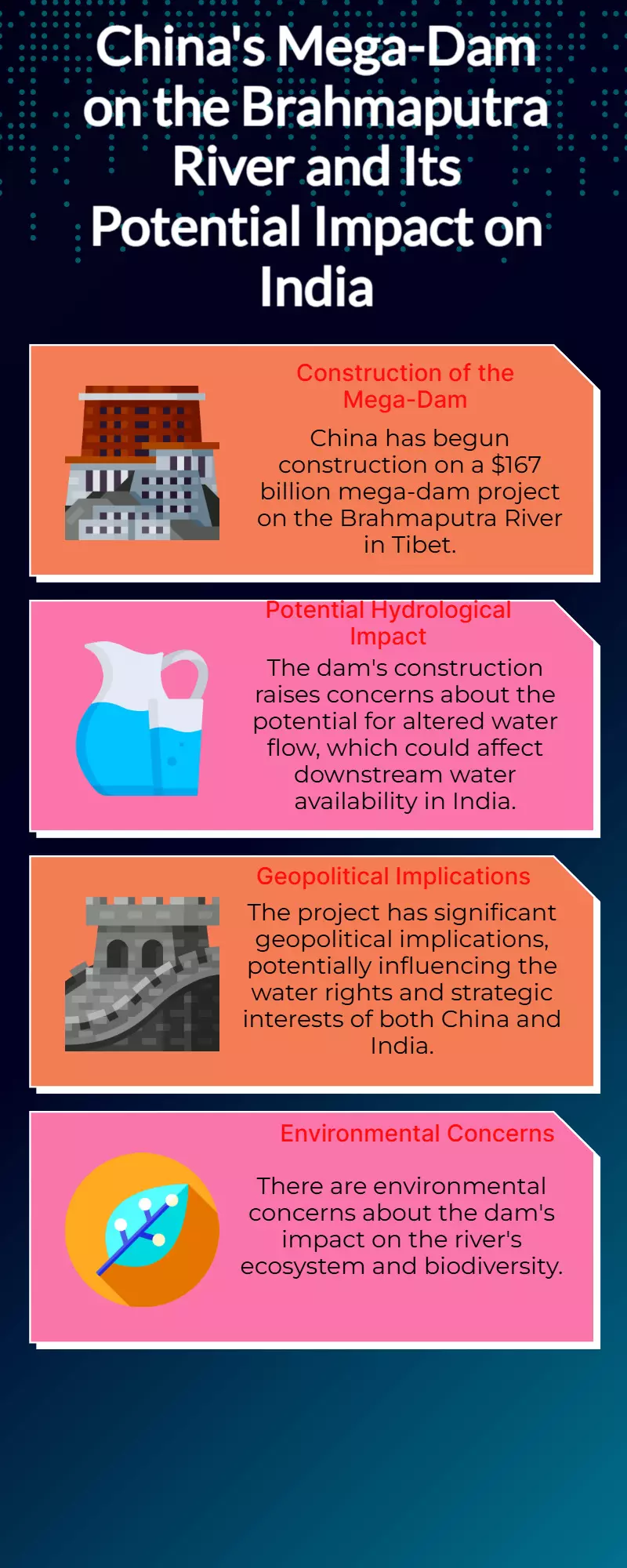China's $167B Brahmaputra mega-dam in Tibet begins—how will it impact India?

By : Krishna Mishra
China has officially begun construction on a massive dam project located in the lower reaches of the Yarlung Tsangpo River, which becomes the Brahmaputra once it flows into India. The development, situated in Tibet, has raised concerns in downstream countries like India and Bangladesh.
Following China’s announcement of the dam last year, India expressed its apprehensions to Beijing, emphasizing the need for transparency and consultation with affected neighboring countries. While the Chinese government has claimed the project is intended to meet electricity demands within Tibet and support external power supply, the potential impact on the flow of the Brahmaputra River has become a point of worry for India and Bangladesh.
India has been closely monitoring developments around the Brahmaputra and China's plans for hydropower generation. According to reports, the dam project, with an investment worth billions of dollars, is expected to produce over 300 billion kilowatt-hours of electricity each year. It will be located in a strategic gorge where the river takes a sharp U-turn before entering Arunachal Pradesh and then flowing into Bangladesh.
New Delhi has reportedly taken several preventive and corrective steps to safeguard the interests of people living in downstream regions who rely heavily on the river for their livelihood.
India's concerns were again raised in January 2025, during Foreign Secretary Vikram Misri’s visit to Beijing for a bilateral meeting under the Foreign Secretary–Vice Foreign Minister mechanism. In July 2025, External Affairs Minister Dr. S. Jaishankar visited Beijing and met with Chinese President Xi Jinping and Foreign Minister Wang Yi, discussing the broader direction of India-China relations and urging a long-term, cooperative approach to resolving bilateral issues.
The project’s groundbreaking ceremony was attended by Chinese Premier Li Qiang, who is also a member of the Standing Committee of the CPC Central Committee. The event marked the official launch of the Yarlung Zangbo River Lower Reaches Hydropower Project. Senior officials, state enterprises, construction teams, and local representatives were present, according to China’s state-run media agency Xinhua.
The project includes the construction of five cascade hydropower stations using a method of straightening river bends and diverting water through tunnels. The total investment is estimated at 1.2 trillion yuan, approximately 167.8 billion US dollars.
Amid growing geopolitical concerns, experts have debated whether China and Pakistan could use river systems like the Brahmaputra and the Indus as strategic tools against India, particularly in the wake of strained regional ties.
Meanwhile, in a bid to enhance infrastructure along the Brahmaputra, Indian Railways has approved the construction of a second rail-cum-road bridge at Saraighat in Assam. The project, under the Northeast Frontier Railway, is part of the doubling of the Agthori-Kamakhya railway line and carries an estimated cost of Rs. 1,473.77 crore. Scheduled for completion by December 2029, the bridge will span a total length of 7.062 kilometers, including a 1.3 km-long steel composite girder section over the river.
